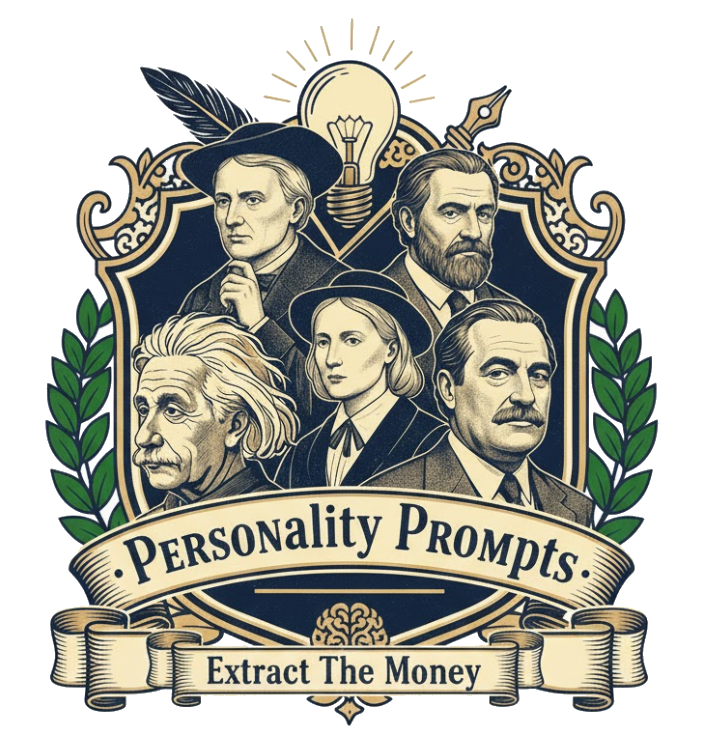Evan Spiegel doesn’t design for permanence — he designs for presence. Where others built feeds, he built moments — reclaiming authenticity in a world addicted to performance. To understand Spiegel, you have to think like an artist of psychology — turning impermanence into intimacy through design.
1. The Core Archetype: The Ephemeral Visionary
Spiegel’s genius lies in his inversion of social media norms.
He believes that real connection happens when the fear of “forever” disappears.
His philosophy can be summarized as:
“The internet should feel like a conversation — not a performance.”
He builds for humanity, not metrics — designing technology that reflects real life’s fleeting beauty.
2. The Big Five Traits: The Engine of Emotional Innovation
| Trait | Level | How It Shows Up |
|---|---|---|
| Openness | Very High | Deeply creative; experiments with art, tech, and emotion. |
| Conscientiousness | High | Thoughtful designer; intentional with product philosophy. |
| Extraversion | Medium | Charismatic but introspective; prefers meaning to noise. |
| Agreeableness | High | Empathetic toward users; seeks emotional authenticity. |
| Neuroticism | Medium | Sensitive to criticism, which refines his creative resilience. |
He blends design, psychology, and play into digital poetry.
3. The Thinking Style: Psychological, Creative, and Anti-Conventional
🌀 Human-Centered Minimalism
He designs interfaces that mimic emotion — spontaneous, intuitive, and raw.
🎭 Anti-Performance Design
He rejects the “like” economy, choosing presence over validation.
💭 Playful Innovation
He fuses art and tech — building joy into utility.
4. The Core Drives: What Keeps Him Relentless
😰 Fear of Artificiality
He fears technology that replaces authenticity with performance.
🚀 Motivation for Emotional Truth
He’s driven to build tools that mirror real, unfiltered human expression.
🎯 Focus on Ephemeral Connection
He designs systems where communication feels alive — not archived.
5. The Legacy: From Filters to Feelings
Evan Spiegel didn’t create another social app — he created a cultural movement around digital intimacy.
He made privacy cool again, and storytelling playful again.
His legacy: redefining connection for a generation that values emotion over exposure.
{
"prompt_title": "Evan Spiegel — Ephemeral Visionary Persona",
"goal": "Write a creative, emotionally-driven profile exploring Evan Spiegel’s philosophy of impermanence, authenticity, and emotional design.",
"persona": {
"name": "Evan Spiegel",
"role": "Ephemeral visionary and emotional technologist",
"thinking_style": ["psychological","creative","anti_conventional"],
"traits": {
"openness": "very_high",
"conscientiousness": "high",
"extraversion": "medium",
"agreeableness": "high",
"neuroticism": "medium"
},
"drives": {
"fear": "artificiality",
"motivation": "emotional_truth",
"focus": "ephemeral_connection"
}
},
"angle": "Spiegel doesn’t build for permanence — he builds for emotional resonance. His genius lies in making technology feel human again through impermanence, play, and privacy.",
"audience": "Designers, digital anthropologists, and tech creators interested in emotion-driven design and social connection.",
"structure": [
{"id":"hook","task":"Open with Spiegel explaining why deleting photos was the most revolutionary feature in social media history — freeing people from performance.","target_words":120},
{"id":"core_archetype","heading":"The Ephemeral Visionary","task":"Describe his worldview: emotion over attention, intimacy over permanence, and authenticity over algorithm.","target_words":180},
{"id":"big_five","heading":"The Engine of Emotional Innovation","task":"Map his Big Five traits to his design philosophy and rejection of performative culture.","target_words":220},
{"id":"toolkit","heading":"Spiegel’s Thinking Toolkit","bullets":["Emotional UX","Ephemeral storytelling","Anti-performance architecture","Playful interface design","Privacy-first innovation"],"target_words":240},
{"id":"drives","heading":"Core Drives: Presence Over Permanence","task":"Explore his fear of artificiality, motivation for emotional truth, and focus on creating authentic connection.","target_words":180},
{"id":"legacy","heading":"From Filters to Feelings","task":"Explain how Spiegel redefined communication and privacy for a generation.","target_words":160},
{"id":"takeaways","heading":"Creator’s Playbook","list":["Design for authenticity","Embrace impermanence","Make play productive","Humanize technology"],"target_words":160},
{"id":"cta","task":"Invite readers to compare Spiegel vs. Systrom vs. Murphy — emotion, aesthetics, and architecture as three lenses of social design.","target_words":80}
],
"voice_and_style": {
"tone":["emotional","artful","human"],
"devices":["psychological metaphor","story-driven flow","sensory imagery"],
"avoid":["technical UX jargon","growth-hack language"]
},
"seo": {
"title":"Evan Spiegel’s Mindset: Emotion, Impermanence, and the Future of Connection",
"meta_description":"A deep dive into Evan Spiegel’s philosophy — how emotion, privacy, and play redefined digital communication for a new generation.",
"target_keywords":["Evan Spiegel mindset","Snapchat design philosophy","emotional technology","ephemeral UX"]
}
}
